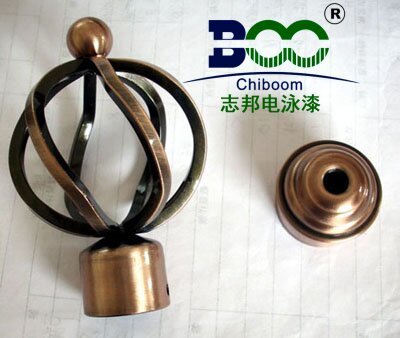The main function of electrophoretic paint
The Main Role of Electrophoretic Paint
Electrophoretic paint, as an efficient and environmentally friendly coating technology, has been widely applied in various fields such as automobiles, home appliances, and hardware. Its main role is not only reflected in its decorative properties, but also in its protection of the substrate and enhancement of functionality. This article will delve into the primary functions of electrophoretic paint.
Firstly, electrophoretic paint plays a crucial role in providing excellent corrosion protection. Metal surfaces are often exposed to air, water, and other corrosive media, leading to corrosion. Electrophoretic paint forms a dense coating that isolates the metal from the external environment, effectively preventing corrosive media from contacting the metal. This significantly extends the metal's lifespan. Additionally, the coating of electrophoretic paint has excellent adhesion, adhering tightly to the metal surface and resisting peeling, further enhancing its corrosion resistance.
Secondly, electrophoretic paint offers outstanding decorative effects. By adjusting the formula and process conditions of electrophoretic paint, coatings with various colors, gloss levels, and textures can be achieved to meet diverse decorative needs. Whether it's the bright appearance of an automobile body or the exquisite texture of a home appliance, electrophoretic paint adds a touch of splendor.

Moreover, electrophoretic paint possesses excellent physical properties. It exhibits high hardness, wear resistance, and impact resistance, effectively resisting damage from external mechanical forces. Simultaneously, the coating of electrophoretic paint maintains long-term stability by resisting the erosion of unfavorable factors such as ultraviolet rays, high temperatures, and humidity.
Furthermore, electrophoretic paint stands out in terms of environmental friendliness. Compared to traditional solvent-based coatings, electrophoretic paint employs a water-based coating system, reducing environmental pollution. Additionally, the coating utilization rate is high during the electrophoretic painting process, minimizing coating waste and emissions. Therefore, electrophoretic paint represents a green coating solution aligned with sustainable development requirements.
In conclusion, the main roles of electrophoretic paint encompass corrosion protection, decorative effects, enhancement of physical properties, and optimization of environmental performance. As technology continues to advance and its application fields expand, electrophoretic paint will continue to fulfill its crucial functions, providing more efficient and environmentally friendly coating solutions across various industries. In the future, we can anticipate electrophoretic paint demonstrating its unique advantages and value in even more fields, bringing more beauty and convenience to people's lives.





 WeChat
WeChat